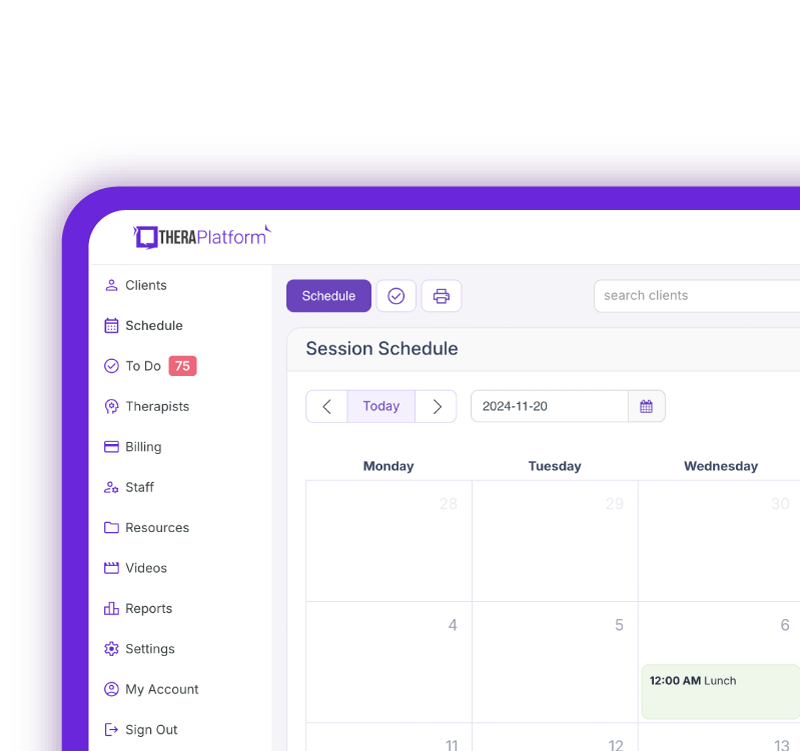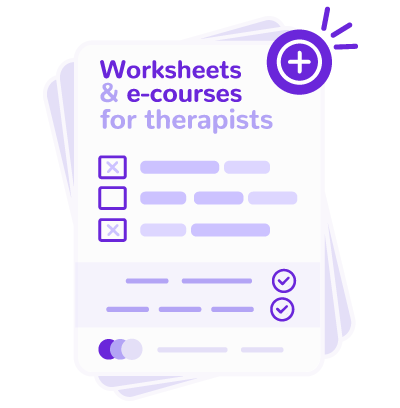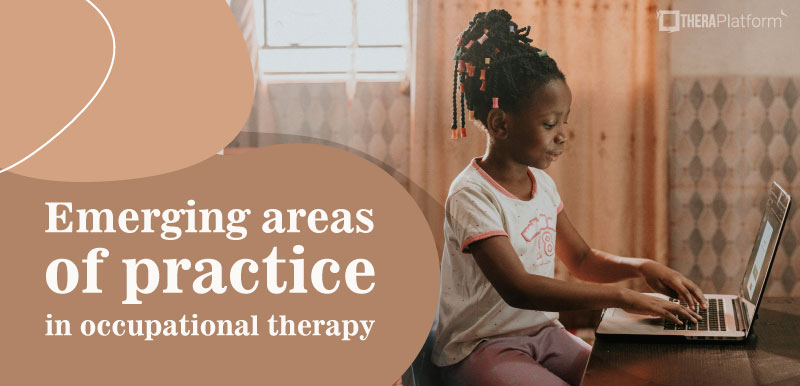Habilitative services and rehabilitative services

Habilitative services and rehabilitative services are crucial aspects of providing occupational, physical, and speech therapy services. Habilitative services involve helping a client keep, learn, or improve functioning or skills for daily living. In contrast, rehabilitative services help a person improve, get back, or keep functioning for daily living that have been impaired or lost due to being disabled, hurt or sick.
Summary
- Habilitative services focus on helping individuals acquire new skills for daily living, while rehabilitative services aim to restore lost or impaired functions due to injury, illness, or disability.
- Understanding the difference is crucial for treatment planning, goal setting, and ensuring therapy aligns with a client’s needs. It also helps clarify that therapy benefits include both attaining and maintaining skills, not just regaining them.
- Accurate classification of services is essential for proper billing and reimbursement. Misclassification can lead to claim denials, delayed payments, and incorrect coverage determinations.
- Therapists must use the correct CPT codes and modifiers (e.g., Modifier 96 for habilitative services, Modifier 97 for rehabilitative services) to ensure proper coverage.
- Common issues include incorrect modifier usage, failure to demonstrate medical necessity, and limited covered sessions. Enrolling in an insurance billing course for therapists can help providers enhance their knowledge.
- Using an EHR system like TheraPlatform with integrated billing software can automate claims processing, improve tracking, and reduce errors, ultimately saving therapists time and streamlining insurance billing.
Having these distinctions is important for designing and implementing treatment plans, goal setting, and ensuring that the therapy services provided align with client needs and goals, and monitoring progress.
Streamline your practice with One EHR
- Scheduling
- Flexible notes
- Template library
- Billing & payments
- Insurance claims
- Client portal
- Telehealth
- E-fax

In addition, it is important to have the distinction between services to understand that “therapy benefits include services to attain and maintain, not just regain, skills and functioning,” according to AOTA.
Furthermore, having the distinction allows for accurate billing, as insurance companies can have different categories of services and coverage. If services are misclassified, it can lead to delayed payment, claim denials, and differences in reimbursement rates. Ensuring proper classification can allow for fair compensation.
What is the difference between habilitative and rehabilitative services?
Understanding the key differences between habilitative and rehabilitative services is essential for providing individualized and client-centered care, treatment planning, goal setting, and insurance billing and reimbursement.
The primary purpose and goal is skill acquisition for habilitation vs skill restoration for rehabilitation.
- Habilitative services primarily focus on individuals with children and those with developmental delays.
- Rehabilitative services are focused on adults who have experienced a medical event such as a stroke, surgery, or chronic illness.
Practice Management + EHR + Telehealth
Mange more in less time in your practice with TheraPlatform

.
Habilitative services
Habilitative services help individuals achieve developmental milestones such as walking or dressing that enable them to function independently in many aspects of life.
Key characteristics of habilitative services
- Focus on skill acquisition
- Learning new skills
- Enhance independence in daily life
- Developing support
- Tailored to meet the individual’s needs and reach milestones
- Services provided
- Services are often provided to individuals or children with developmental disabilities, Autism Spectrum Disorder, congenital disabilities, genetic disorders, Down Syndrome, or Cerebral Palsy.
Common examples of habilitative services in therapy
Occupational therapy
- Teaching a child with Autism Spectrum Disorder fine motor skills such as getting dressed or writing
- Sensory integration strategies for those with Sensory Processing Disorder
Physical therapy
- Teaching a child with Cerebral Palsy how to improve their overall balance and coordination
- Developing strength and coordination in a child with developmental delay
Speech therapy
- Teaching a child with Autism Spectrum Disorder how to use an assistive device to communicate
- Oral motor skills training for proper speech development
Teaching a child with developmental coordination disorder to develop writing skills
- Child will develop a dynamic tripod pencil grip demonstrating correct grip in 4 out of 5 writing sessions, with 50% verbal cues, and assistive devices as needed (adaptable pencil grip/holder).
- In 4 months, child will be able to write their first name with correct letter formation and spacing on lined paper, maintaining legibility in 75% of attempts.
Streamline your practice with One EHR
- Scheduling
- Flexible notes
- Template library
- Billing & payments
- Insurance claims
- Client portal
- Telehealth
- E-fax

Rehabilitative services
The overall goal with rehabilitative services is to re-gain or restore one’s pre-existing abilities and get them to a level of optimal functioning. It involves a structured therapy plan and program to target an individual’s physical, cognitive, and social-emotional needs.
Key characteristics of rehabilitative services
- Focus on regaining skills and functional abilities
- Restore abilities before the medical event
- Therapy is focused on returning to the prior level of function as best as possible
- Services are provided to individuals recovering from injuries, surgeries, or illnesses
- Rehabilitative services are provided to those individuals who experienced a medical event such as a stroke, surgery, brain injury, spinal cord injury, or heart attack.
- Focused on patients with chronic illnesses such as cancer, Parkinson's Disease, or Multiple Sclerosis.
Common examples of rehabilitative services in therapy
Occupational therapy
- Regaining hand strength and fine motor skills after hand surgery
- Re-learning how to dress and bathe oneself after a stroke
Physical therapy
- Recovering strength, mobility, and endurance after a hip-replacement
- Improving motor functions and recovering balance and walking abilities after an individual experienced a stroke
Speech therapy
- Treating clients who experienced a stroke to regain speech and swallowing abilities
- Treating clients who experienced aphasia after a brain injury
Free Resources for Therapists
Click below and help yourself to peer-created resources:

Rehabilitative service goal for occupational therapy
Rehabilitative goal for an adult who experienced a stroke focused on activities of Daily Living (ADLs)
- In 2 months, the patient will independently dress their upper body, utilizing compensatory strategies (such as dressing the affected side first) in 8 out of 10 sessions.
- In 1 month, the patient will demonstrate the ability to use adaptive equipment (such as a dressing stick, or sock aid) to don and doff clothing, with minimal assistance in 8 out of 10 sessions.
Insurance coverage and billing
Having an understanding of the differences in insurance coverage for habilitative and rehabilitation services and using the correct CPT codes and modifiers are critical for accurate billing and reimbursement.
Proper documentation allows for continued insurance coverage for therapy sessions and prevents insurance claim denials. Coverage for habilitative vs. rehabilitative services can vary based on the services and policies of the insurance provider.
Insurance billing for habilitative and rehabilitative services
Both habilitative and rehabilitative services use similar CPT codes, as they often involve the same types of therapy. However, modifiers are added to distinguish the service type.
- Modifier 96 is used for habilitative services referring to therapy for acquiring skills that one has not learned yet.
- Modifier 97 for rehabilitative services refers to regaining skills.
In addition, modifiers such as GO for occupational therapy, GP for physical therapy, and GN for speech therapy services may need to be utilized.
Documentation requirements for habilitative and rehabilitative services
Both habilitative and rehabilitative services require comprehensive documentation to demonstrate medical necessity for insurance coverage. A well-documented initial evaluation outlining the need for treatment is crucial.
Additionally, the treatment plan should include SMART goals (Specific, Measurable, Achievable, Relevant, Time-bound) to guide therapy, and progress notes must consistently track improvements using objective measures and/or parent or guardian input.
Clear evidence of progress is essential for both types of services to ensure ongoing coverage and support effective treatment.
Challenges in billing habilitative and rehabilitative services
Common challenges with insurance claim denials include incorrect modifier usage, failure to adequately demonstrate medical necessity, and insufficient documentation.
Many insurance plans also limit the number of covered sessions, making pre-authorization essential to avoid exceeding these limits. To overcome these challenges, it is crucial to maintain thorough documentation, use objective measures to track progress, and appeal denials when necessary.
Tips for accurate billing and avoiding denials
- Cross-reference and utilize CPT code descriptors
- Utilize ASHA, APTA AOTA websites for updated billing codes and guidelines
- Utilize templates or checklists for medical necessity, treatment goals, and tracking progress
- Document using objective measures
- Obtain pre-authorization and review patient’s policy prior to initiating services
Best practices for therapy practices
- Educating staff: Training staff on the differences between habilitative and rehabilitative services and how to document for each type of service
- Ensure consistent coding and documentation: Utilize standardized coding and documentation guidelines and train staff on how to utilize these guidelines
- Using Technology and Tools: Utilize specialized billing software to cross-reference and manage coding for services and documentation
- Using Electronic Health Records (EHR): Utilize EHRs to help streamline documentation, services, and to improve billing accuracy and efficiency.
These differences have significant implications for insurance billing, as both types of services require specific coding, documentation, and modifier use to ensure proper coverage. It is pertinent that therapists bill accurately for both services through comprehensive documentation, seek out pre-authorizations for extended care, and have a foundational understanding of provider policy guidelines.
By staying up to date on coding guidelines, utilizing healthcare technology such as EHR systems, and having continuing education on therapy practices on billing and coding, therapy practices can minimize billing errors, reduce the risk of claim denials, and allow for clients to receive necessary care without delays.
Streamline your practice with One EHR
- Scheduling
- Flexible notes
- Template library
- Billing & payments
- Insurance claims
- Client portal
- Telehealth
- E-fax

Resources
TheraPlatform is an all-in-one EHR, practice management, and teletherapy software built for therapists to help them save time on admin tasks. It offers a 30-day risk-free trial with no credit card required and supports mental and behavioral health, SLPs, OTs, and PTs in group and solo practices.
AOTA Billing and Coding Resources:
- AOTA
- AOTA Practice Essentials Coding
- AOTA Advocacy Issues HealthCare Reform ACA Plans
- AOTA Advocacy Issues Healthcare Reform Eval Tool
APTA Billing and Coding Resources
- APTA
- APTA Practice Payment Coding/Billing
- APTA Guide to Assess Habilitative, Rehabilitative Insurance Benefits
ASHA Billing and Coding Resources
- ASHA
- ASHA Essential Coverage of Habilitation and Rehabilitation
- ASHA Essential Coverage Rehabilitative and Habilitative Services and Devices
AMA Billing and Coding Resources
- American Medical Association CPT Lookup
Centers for Medicare & Medicaid Services
- CMS Coding and Billing Information
More resources
- Therapy resources and worksheets
- Therapy private practice courses
- Ultimate teletherapy ebook
- The Ultimate Insurance Billing Guide for Therapists
- The Ultimate Guide to Starting a Private Therapy Practice
- Insurance billing 101
- Practice management tools
Free video classes
- Free on-demand insurance billing for therapist course
- Free mini video lessons to enhance your private practice
- 9 Admin tasks to automate in your private practice
References
American Occupational Therapy Association, American Physical Therapy Association, & American Speech-Language-Hearing Association. (2021). Joint statement: Habilitative and rehabilitative services and devices benefit coverage. https://www.aota.org/-/media/corporate/files/advocacy/health-care-reform/joint-habilitatio n-rehabilitation-benefit-coverage-statement.pdf
AOTA. Tool from AOTA, APTA, and ASHA helps evaluate habilitative and rehabilitative insurance benefits. Aota.org. https://www.aota.org/advocacy/issues/health-care-reform/health-care-reform---eval-toolhabilitative-rehabilitative



